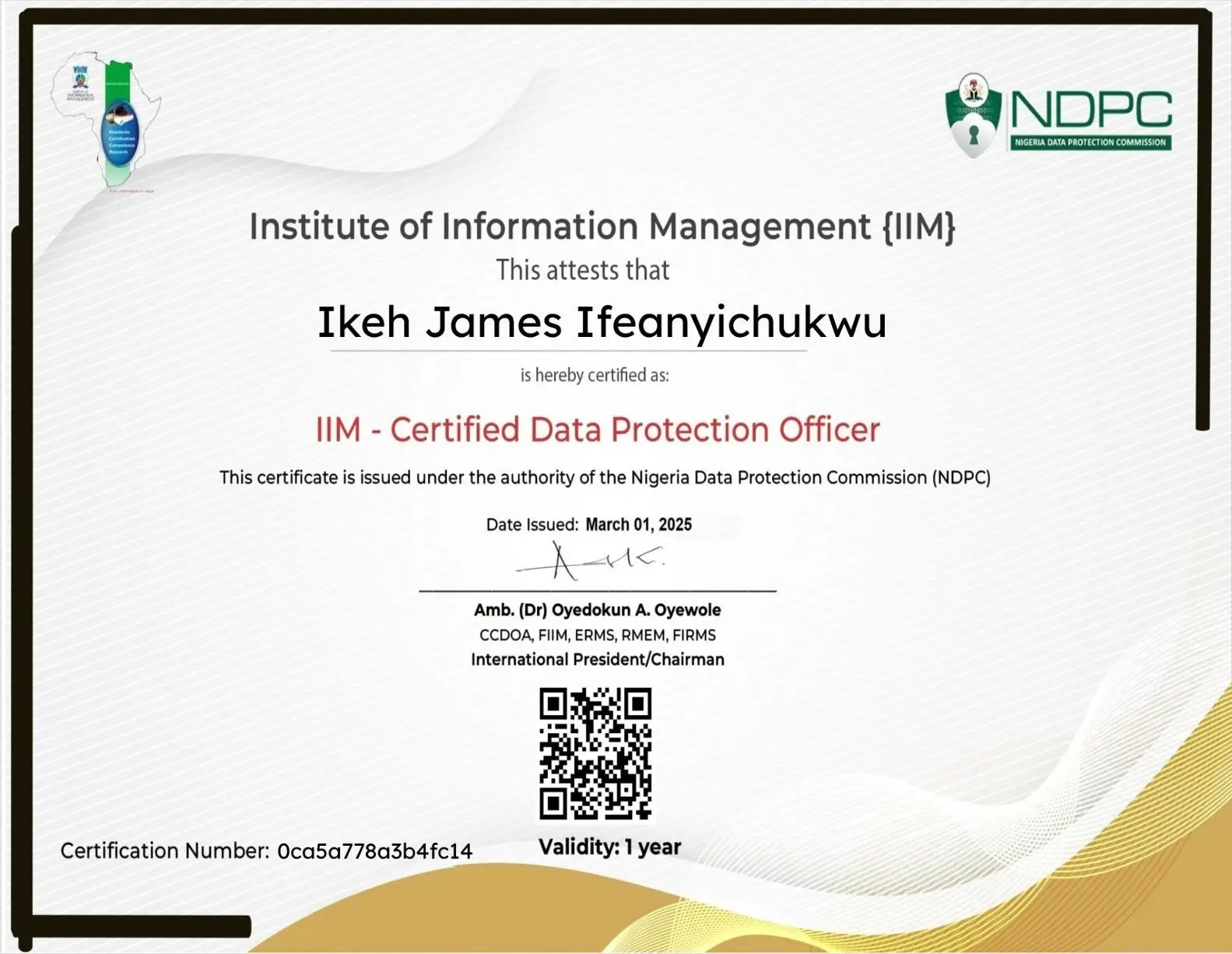Data Minimization: The Secret to Better Compliance and Lower Risk
Share

Data minimization is a core principle in global data protection.
In today’s data-driven world, organizations collect more information than ever before. But more data doesn’t always mean more value — it can mean more risk. From privacy breaches to regulatory penalties, holding unnecessary data exposes businesses to massive compliance and security challenges.
That’s where data minimization comes in — a simple yet powerful privacy principle that limits the amount of personal data you collect, store, and process to only what’s absolutely necessary. When properly applied, it enhances compliance, reduces costs, and strengthens trust with customers.
What Is Data Minimization?
Data minimization is a core principle in global data protection laws such as the EU’s GDPR, the Nigerian NDPA, and California’s CCPA.
It means:
“Organizations should collect and process only the personal data that is necessary, adequate, and relevant for a specific purpose.”
In simpler terms — don’t collect or keep data you don’t need.
Why Data Minimization Matters
| Benefit | How It Helps |
|---|---|
| Legal Compliance | Meets GDPR (Art. 5(1)(c)) and NDPA obligations, reducing the risk of fines. |
| Lower Breach Risk | Less stored data means fewer assets for hackers to target. |
| Operational Efficiency | Reduces storage costs and simplifies data management. |
| Customer Trust | Shows you respect user privacy — a key factor in brand loyalty. |
| Incident Response Simplicity | Easier to manage and investigate fewer data sets in case of a breach. |
Real-World Example: Overcollection Gone Wrong
In 2022, a global retailer was fined €1.2 million under GDPR for collecting extensive customer profiling data during loyalty sign-ups — far more than was required. The excess data later became part of a breach that exposed sensitive information.
Had the company applied strict data minimization, both the fine and the breach impact could have been prevented.
How to Apply Data Minimization in Your Organization
1. Define Purpose Clearly
Start by identifying why you need each piece of data. Every data field in a form should have a defined purpose tied to business objectives. If it doesn’t, remove it.
2. Review and Map Data Flows
Create a data inventory showing where personal data enters, how it’s processed, and where it’s stored. This helps identify unnecessary collection points.
3. Use Anonymization or Pseudonymization
If personal identifiers aren’t essential, anonymize them. For example, store only transaction IDs instead of names for analytics.
4. Set Retention Limits
Don’t keep data forever. Define retention schedules — e.g., delete inactive customer data after 2 years unless legally required to retain it longer.
5. Enable User Controls
Allow users to update or delete their information. This aligns with the right to erasure and promotes transparency.
6. Train Staff Regularly
Employees are the frontline of compliance. Train them to question data requests that seem excessive or irrelevant.
7. Use Privacy by Design
Integrate minimization into product development — collecting the least amount of personal data needed for functionality.
Data Minimization vs. Data Retention
| Principle | Definition | Goal |
|---|---|---|
| Data Minimization | Collect only what’s necessary for the purpose. | Prevent overcollection. |
| Data Retention | Keep data only as long as needed. | Prevent data hoarding. |
Both work hand-in-hand. Minimization reduces what you collect; retention control reduces how long you keep it.
Case Study: Nigerian Fintech Compliance Success
A Nigerian fintech startup introduced a data minimization framework before launching its app. They only collected essential KYC information (BVN, phone number, and ID) instead of detailed employment or family history.
Result:
- Faster onboarding time (↓ 35%)
- Improved user trust
- Full NDPA compliance with no regulatory pushback
This practical approach protected both their brand reputation and customers’ data privacy.
Tools and Techniques That Support Data Minimization
- Data Discovery Tools: Identify unnecessary or sensitive data across databases (e.g., OneTrust, BigID).
- Role-Based Access Controls: Ensure only authorized staff can view specific data sets.
- Automated Deletion Systems: Schedule periodic clean-ups of inactive data.
- Privacy Impact Assessments (DPIAs): Evaluate data necessity for each project.
- Encryption and Tokenization: Reduce exposure even for minimal datasets.
FAQs
Q1. Is data minimization mandatory under GDPR or NDPA?
Yes. It’s a legal obligation under Article 5(1)(c) of GDPR and Section 24(1)(c) of the Nigerian Data Protection Act (NDPA).
Q2. Can businesses still use data analytics while applying minimization?
Absolutely. Use anonymized or aggregated data for analytics instead of identifiable personal data.
Q3. How does data minimization lower cyber risk?
Less data means a smaller attack surface — even if hackers gain access, there’s less valuable information to exploit.
Q4. What’s the difference between minimization and data protection by design?
Minimization is a principle; data protection by design is the broader framework that embeds it into systems and workflows.
Conclusion
Data minimization isn’t just a compliance checkbox — it’s a strategic privacy safeguard. By collecting and retaining only what’s necessary, organizations not only comply with global privacy laws but also build stronger trust, reduce exposure, and cut unnecessary costs.
In a world where every byte of personal data can be a potential liability, less really is more.


























Leave a Reply